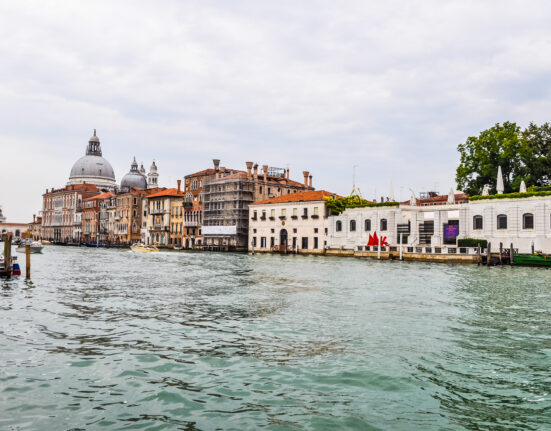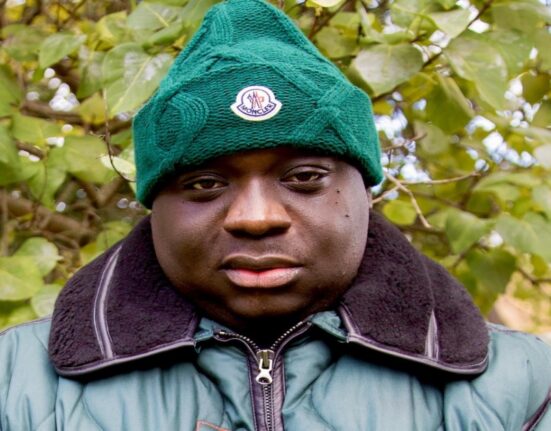For much of his life, Mr. Barancik was known as an architect, sought after for the stylish homes, high-rise apartment buildings and office complexes that he and his firm designed in his home city of Chicago and across the country.
But in his final years, he came to renown for his role in a chapter of World War II that had long gone unnoted. For three months after the end of the war, Mr. Barancik, then a 21-year-old private first class in the U.S. Army, assisted in the operations of a unit known as the Monuments, Fine Arts, and Archives section.
The MFAA — whose members were known colloquially as “monuments men,” although after combat ended they came to include women — had been established in 1943 to help the Allies minimize the destruction of artwork and cultural sites in Europe in the course of the war. Museum curators and directors, artists and architects, scholars and librarians volunteered for service and received military ranks.
“They walked away from established careers to become this new kind of soldier — one charged with saving rather than destroying,” said Robert M. Edsel, the author of several books on their story and a collaborator on “The Monuments Men,” the 2014 film directed by and starring George Clooney.
Monuments officers at first helped Allied commanders guide bombers away from sites of cultural importance. When such places sustained accidental damage, the officers helped lead initial repairs. Their presence, according to Edsel, served as a counterbalance to Nazi propaganda about the supposed depravity of the Allies, helping to win over “hearts and minds.”
As the war progressed and was eventually won, the unit’s mission evolved, as its members became detectives investigating what Edsel described as the “greatest theft in history.”
As the Nazis advanced across Europe, they had stolen vast quantities of artwork belonging to museums and other institutions in conquered territories and to Jews persecuted and in many cases murdered in the Holocaust.
Still more works of art had been hidden in monasteries, castles, caves and salt mines to protect them from Nazi theft or wartime bombs. These treasures included paintings, drawings, tapestries, sculptures, rare books, church manuscripts, works of stained glass, coins and other artifacts accumulated over centuries — even prized butterfly collections.
In the aftermath of the war, the monuments officers became guardians of those works and undertook the first steps toward their restitution. The officers established central collection and distribution points. Mr. Barancik, an art lover, volunteered for service and was assigned to work as a driver and guard in Austria.
“The Americans cared about the cultural traditions of Europe,” he told the Los Angeles Times in 2015. “We did everything we could to salvage what the Nazis had done. It’s the best we could do.”
In all, about 350 men and women from 14 countries served with the MFAA, according to Edsel, the founder and chairman of the board of the Monuments Men and Women Foundation. Of them, Mr. Barancik was the last surviving.
The release of Clooney’s movie helped bring their story to popular attention, and in 2015, with Mr. Barancik and several of his former colleagues in attendance, the group received the Congressional Gold Medal.
Richard Morton Barancik was born in Chicago on Oct. 19, 1924. His father was a physician, and his mother, a homemaker, was a classically trained pianist who provided musical accompaniment for ballet classes.
Mr. Barancik was always drawn to art, his daughter said. During high school he developed an interest in cartooning, a hobby he continued until the final days of his life.
In 1942, after graduating from high school, he joined the Army Enlisted Reserve Corps, studying engineering at the University of Nebraska before he was deployed in 1944 to England.
On Christmas Eve of that year, he was sailing across the English Channel, set to join the Battle of the Bulge, when the Germans torpedoed another Allied ship making the same journey, killing hundreds of U.S. servicemen — including many from Mr. Barancik’s division — in one of the worst naval disasters in U.S. history.
In the aftermath of the attack, Mr. Barancik was dispatched to France and eventually to Austria, where he learned of the MFAA and volunteered for service.
“When I arrived in Salzburg,” he said, “I was not only overwhelmed by the beauty of the town but the quality of the men in the Fine Arts Section. They were typically older and very well educated.”
Mr. Barancik later studied architecture at the University of Cambridge in England and at the École des Beaux-Arts at Fontainebleau in France. After returning to the United States, he studied at the University of Illinois, receiving a Bachelor of Science degree in 1947 and a second bachelor’s degree, in architecture, the following year.
He was for decades a principal in the Chicago-based firm of Barancik, Conte and Associates.
Mr. Barancik’s marriage to Rema Stone ended in divorce. His second wife, the former Suzanne Hammerman, died in 1995 after 31 years of marriage. His third wife, Claire Holland Barancik, died in 2021 after two decades of marriage.
Survivors include three children from his first marriage, Robert Barancik of St. Petersburg, Fla., Michael Barancik of Bainbridge Island, Wash., and Cathy B. Graham of New York; two children from his second marriage, Jill Barancik of Chicago and Ellie Barancik of Los Angeles; four grandchildren; and three great-grandchildren.
Nearly 80 years after the end of World War II, the return of Nazi-plundered artwork goes on, both to museums and to the heirs of Jewish collectors who were robbed of their treasures. Some works will never be returned, having been burned or broken or otherwise destroyed in the war.
In an interview, Jill Barancik said that her father was “reluctant to be held up as a hero” because he knew that many monuments officers were “far older and more accomplished.”
Several years ago, an Italian interviewer asked Mr. Barancik how it felt to be the last survivor of their group. “I am neither sad nor proud,” he replied. “I simply feel honored to have served my country.”







